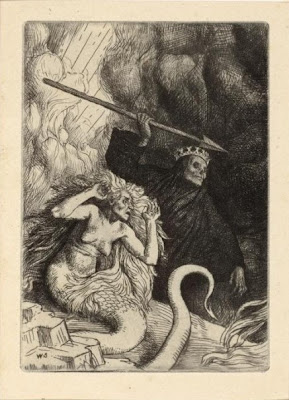United Theological Seminary will hold a conference called "Theology, Eucharist and Ministry" on May 17 of this year. This conference is in honor of Kendall K. McCabe, a retiring professor who has taught at United for 35 years. Speakers and participants are as follows:
William J. Abraham is the Albert C. Outler Chair in Wesleyan Studies at Perkins School of Theology in Dallas, TX. He is the author of Wesley for Armchair Theologians and Canon and Criterion in Christian Theology: From the Fathers to Feminism.
Ron Anderson is Ernest and Bernice Styberg Professor of Worship at Garrett Evangelical Theological Seminary in Evanston, IL. He is the author of Taught by God: Teaching and Spiritual Formation and Worship and Christian Identity: Practicing Ourselves.
Daniel Castelo is Associate Professor of Theology at Seattle Pacific University in Seattle, WA. He is the author of The Apathetic God: Exploring the Contemporary Relevance of Divine Impassibility.
Paul W. Chilcote is Professor of Historical Theology and Wesleyan Studies at Ashland Theological Seminary in Ashland, OH. He is the author of Recapturing the Wesleys’ Vision.
John Drury is Assistant Professor of Systematic Theology and Christian Ministry at Wesley Seminary at Indiana Wesleyan University in Marion, IN.
Richard Eslinger is Professor of Homiletics and Worship at United Theological Seminary in Dayton, OH. He is the author of Web of Preaching: New Options in Homiletic Method and A New Hearing: Living Options in Homiletics.
Elaine Heath is McCreless Associate Professor of Evangelism at Perkins School of Theology in Dallas, TX. She is the author of We Were the Least of These: Reading the Bible with the Survivors of Sexual Abuse and Longing for Spring: A New Vision for Wesleyan Community.
Sarah H. Lancaster is Professor in the Werner Chair of Theology at Methodist Theological School of Ohio in Columbus, OH. She is the author of The Pursuit of Happiness: Blessing and Fulfillment in Christian Faith and Women and the Authority of Scripture: A Narrative Approach.
Matthew Levering is Professor of Religious Studies at The University of Dayton and the author or editor of numerous books, including The Betrayal of Charity and The Oxford Handbook of the Trinity.
Rebekah Miles is Associate Professor of Ethics and Practical Theology at Perkins School of Theology in Dallas, TX. She is the author of numerous articles and books, including The Pastor as Moral Guide and Wesley and the Quadrilateral: Renewing the Conversation.
Andrew Sung Park is Professor of Theology and Ethics at United Theological Seminary in Dayton, OH. He is the author of Triune Atonement: Christ’s Healing for Sinners, Victims and the Whole Creation and From Hurt to Healing: A Theology of the Wounded.
Brent Peterson is Associate Professor of Theology at Northwest Nazarene University in Nampa, ID. He is the promotional secretary of the Wesleyan Theological Society and the author of Created to Worship: God’s Invitation to Become Fully Human.
Don E. Saliers is William R. Cannon Distinguished Professor of Theology and Worship, Emeritus, at Candler School of Theology in Atlanta Georgia. He is the author of Worship as Theology and Worship and Spirituality.
Jason E. Vickers is Associate Professor of Theology and Wesleyan Studies at United Theological Seminary in Dayton, OH. He is the author of Minding the Good Ground: A Theology for Church Renewal and Wesley: A Guide for the Perplexed.
Geoffrey Wainwright is Robert Earl Cushman Professor of Christian Theology at Duke Divinity School in Durham, NC. He is the author of dozens of books and articles, including Doxology: A Systematic Theology and Lesslie Newbigin: A Theological Life.
Robin Knowles Wallace is Professor in the Taylor Endowed Chair of Worship and Music at Methodist Theological School of Ohio in Columbus, OH. She is the author of The Christian Year: A Guide for Worship and Preaching and Worshipping in the Small Membership Church.
Karen B. Westerfield Tucker is Professor of Worship at Boston University School of Theology in Boston, MA. She is the author of American Methodist Worship and editor of The Sunday Service of the Methodists.
Edward P. Wimberly is Vice President of Academic Affairs and Provost of the Interdenominal Theological Center in Atlanta, GA. He is the author of African American Pastoral Care: The Politics of Oppression and Empowerment and Moving from Shame to Self-Worth: Preaching and Pastoral Care.
Joyce Ann Zimmerman is a Sister of the Precious Blood, Dayton, OH, the founding Director of the Institute for Liturgical Ministry, and the author of The Ministry of Liturgical Environment.
To learn more about this event or to register, click here.













